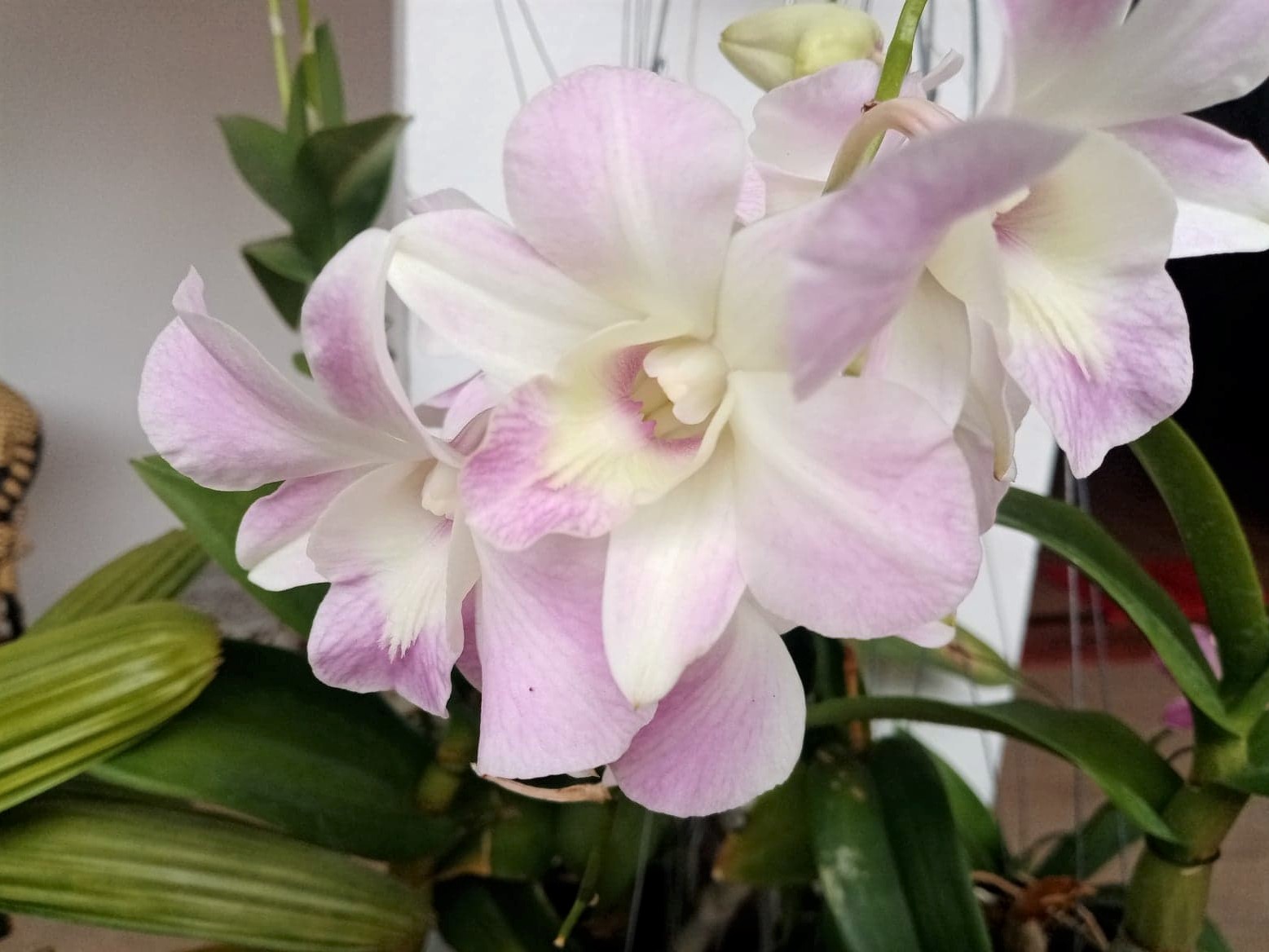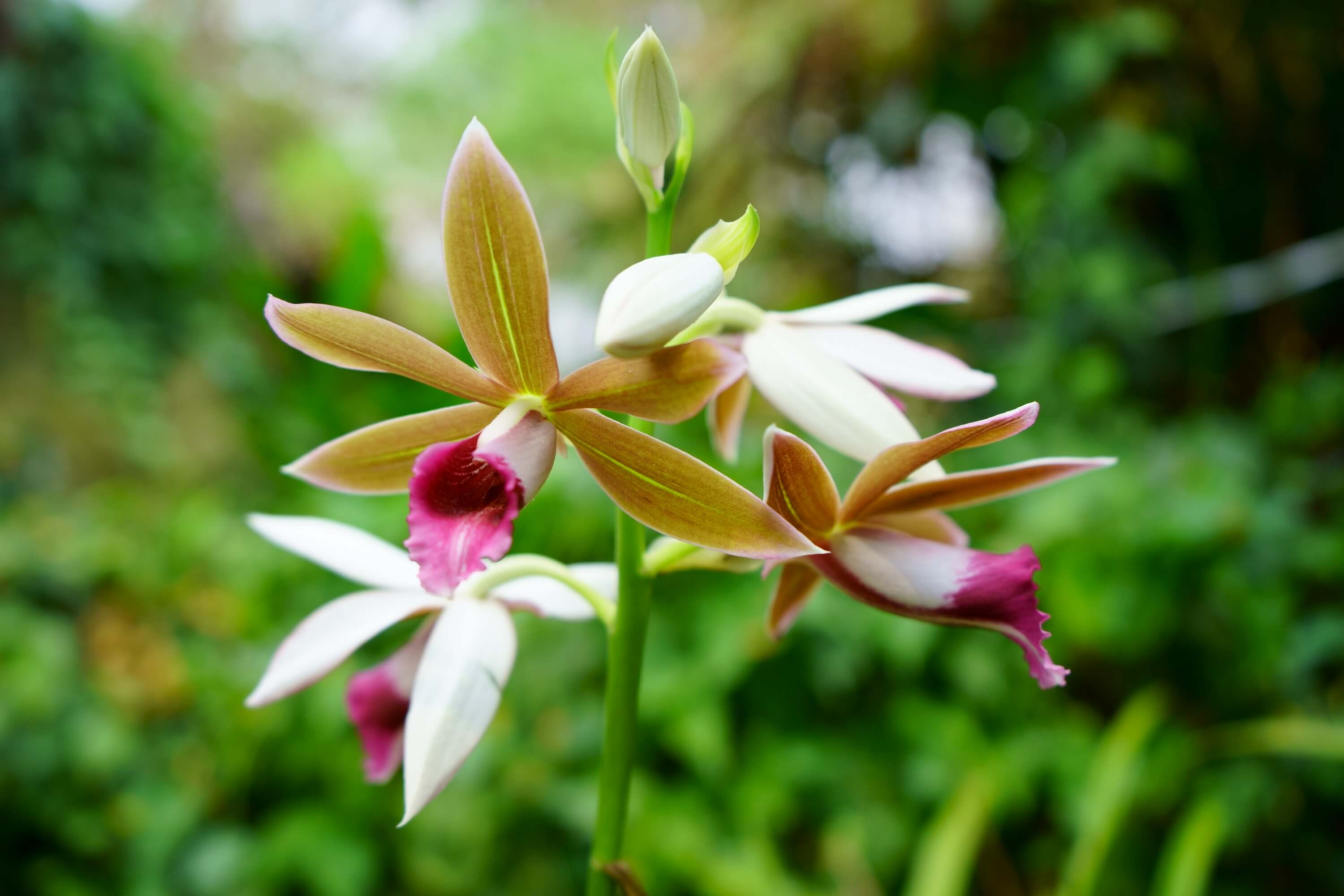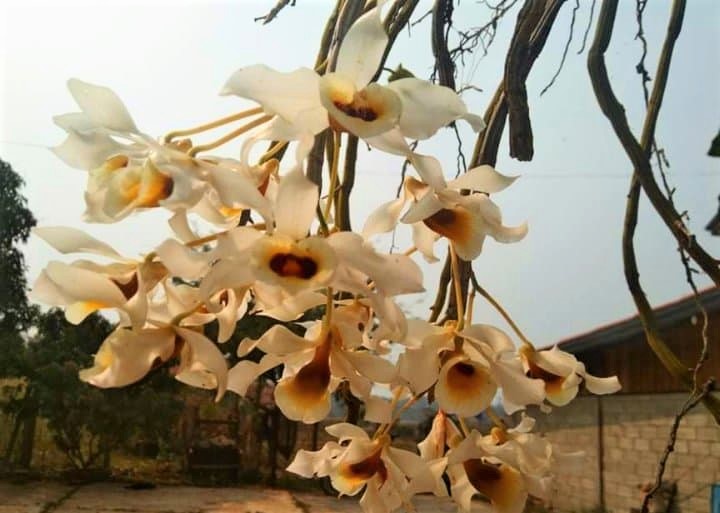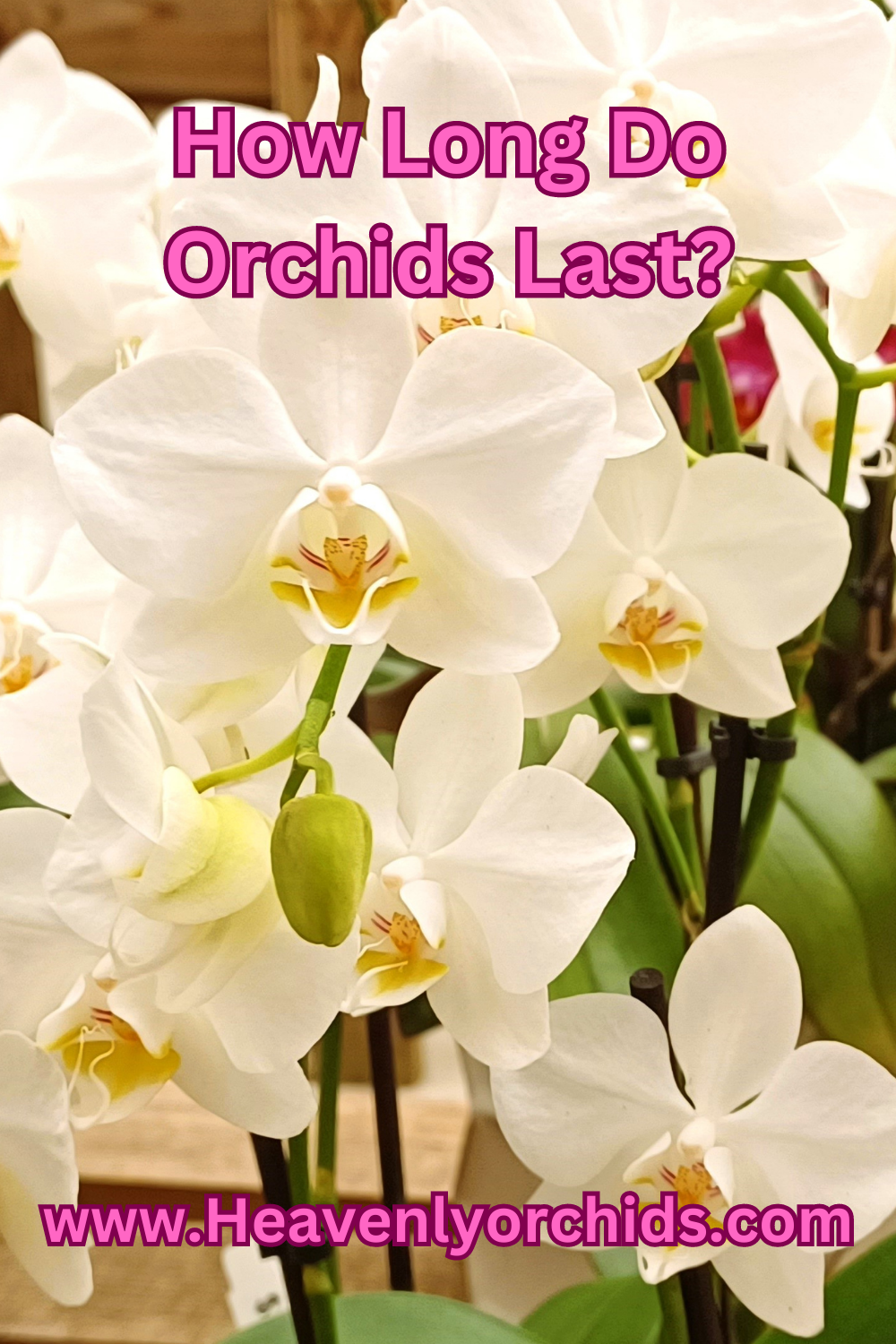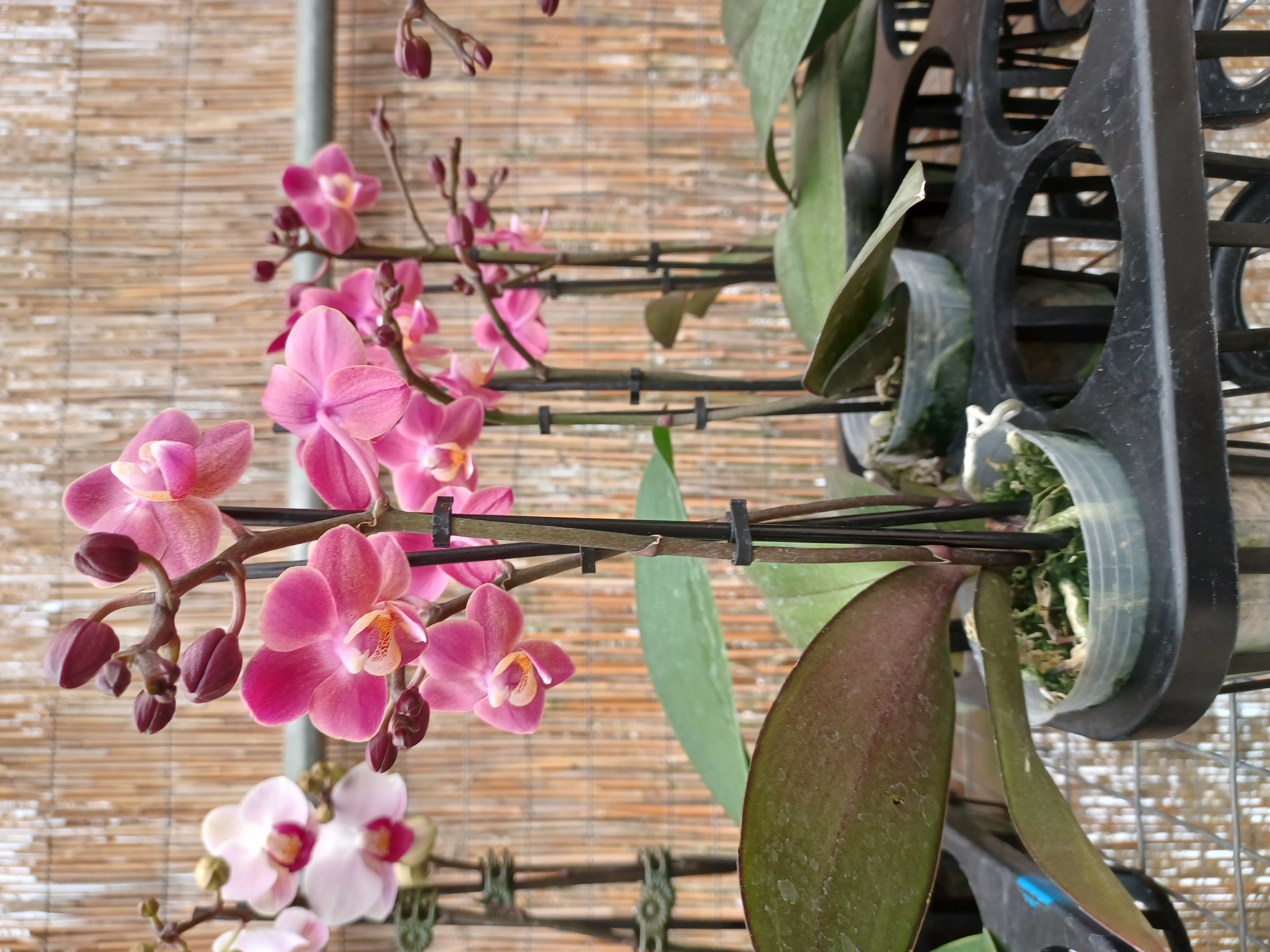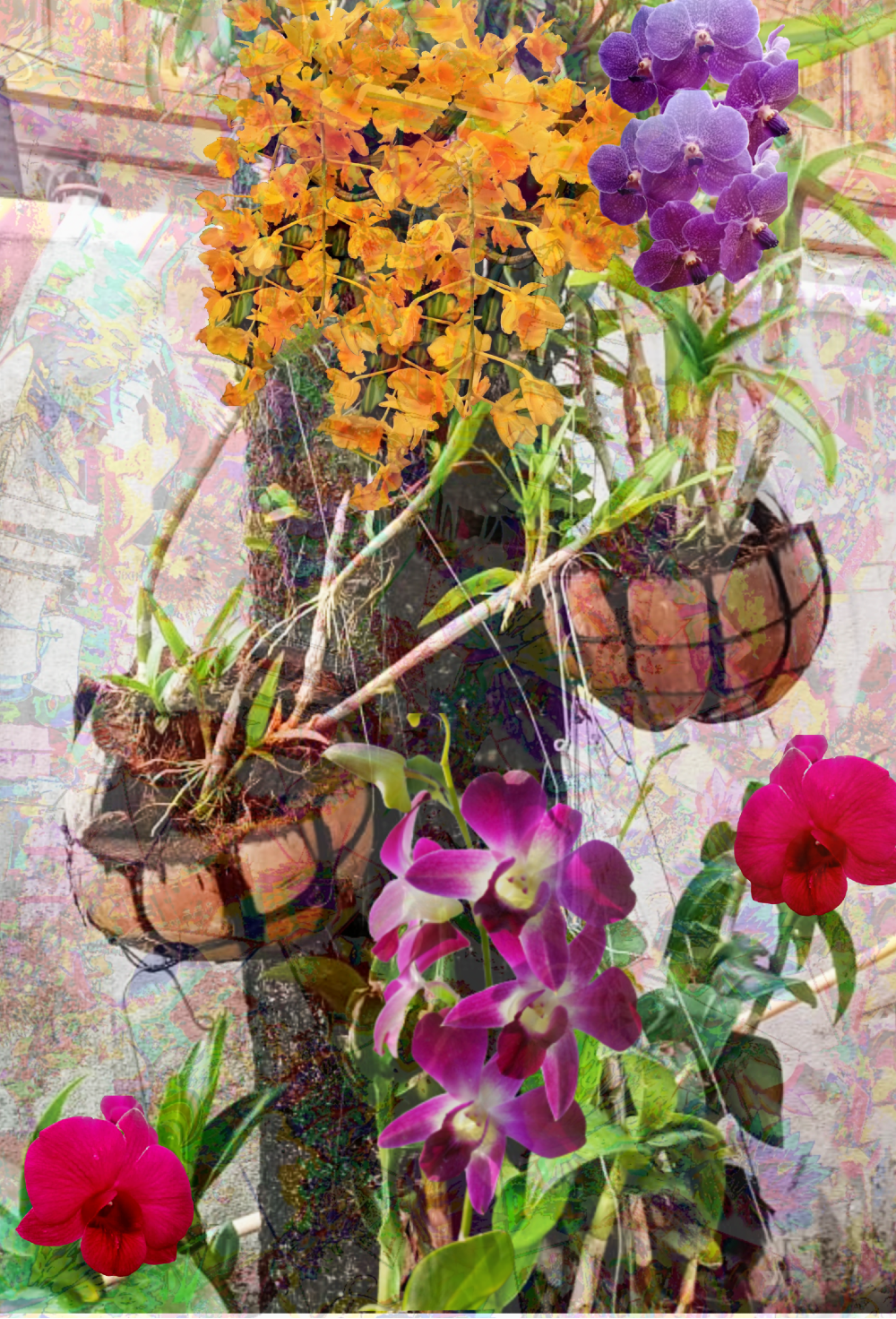How Long Do Orchids Last?
Orchid flowers, with their beguiling beauty, diverse colors and incredible array of shapes and forms, have always held a special place in the hearts of plant lovers. As a new orchid grower, you may wonder about how long do orchids last? Orchid flowers exhibit a remarkable range of lifespans, with some lasting a mere few days while others endure for several months. In this article, we embark on a fascinating journey through different orchid genera and species, exploring their unique blooming periods. We will delve into the flowering times of Phalaenopsis, Miltoniopsis, Cattleya, Paphiopedilum, Dendrobium, and Vanda orchids. Additionally, we will discuss their fertilizer and light requirements, as well as general care tips to help you nurture these captivating floral wonders. Join us as we unravel the mysteries behind the ephemeral beauty of orchid flowers.

Heavenly Orchids participates in affiliate marketing programs, which means we may earn commissions on qualifying purchases made through our links. We only recommend products we genuinely believe in.
Never Guess Again! Get Expert Orchid Care Tips Straight to Your Inbox!
Phalaenopsis: Enduring Elegance
Phalaenopsis orchids, also known as Moth Orchids, are very popular and are probably the easiest orchid for beginners to delve into the world of orchids.. Their blooms often appear in shades of white, pink, purple, and various patterns, creating a stunning visual display. Phalaenopsis orchids thrive in moderate to bright indirect light, making them ideal for east or west-facing windows.
Care Tips:
- Light: Moderate to bright indirect light is ideal. An east or west-facing window works perfectly. If natural light is insufficient, consider supplementing with affordable grow lights to mimic their preferred conditions.
- Fertilizer: Use a balanced orchid fertilizer during active growth and switch to a high-phosphorus blend during blooming.
Miltoniopsis: Orchid Pansies
Miltoniopsis orchids, fondly called Pansy Orchids, exhibit pansy like flowers with vibrant colors and intricate patterns reminiscent of the Viola genus of flowers. Their flowers typically last four to six weeks, adding a splash of color and intricate detail to your indoor garden.
Care Tips:
- Light: Medium to bright indirect light is best. Avoid direct sunlight to prevent leaf burn.
- Fertilizer: Feed regularly with a balanced orchid fertilizer during growth phases.
- Tailored for Orchids Specifically formulated by Michigan State University
- Pure Water Compatibility
- Balanced Nutrient Profile
- Urea-Free Formula
- Versatile and Easy to Use
Cattleya: Majestic but Fleeting
Cattleya orchids are known for their large, showy flowers, though their blooms are relatively short-lived, lasting two to four weeks. Their vibrant colors and delightful fragrances make them a standout in any collection.
Care Tips:
- Light: Bright indirect light is key. A well-lit spot with filtered sunlight works wonders.
- Fertilizer: Use a high-phosphorus fertilizer to encourage robust blooms.
For more information on the best orchid fertilizer choices, visit our page here.
Paphiopedilum: Slipper Orchids
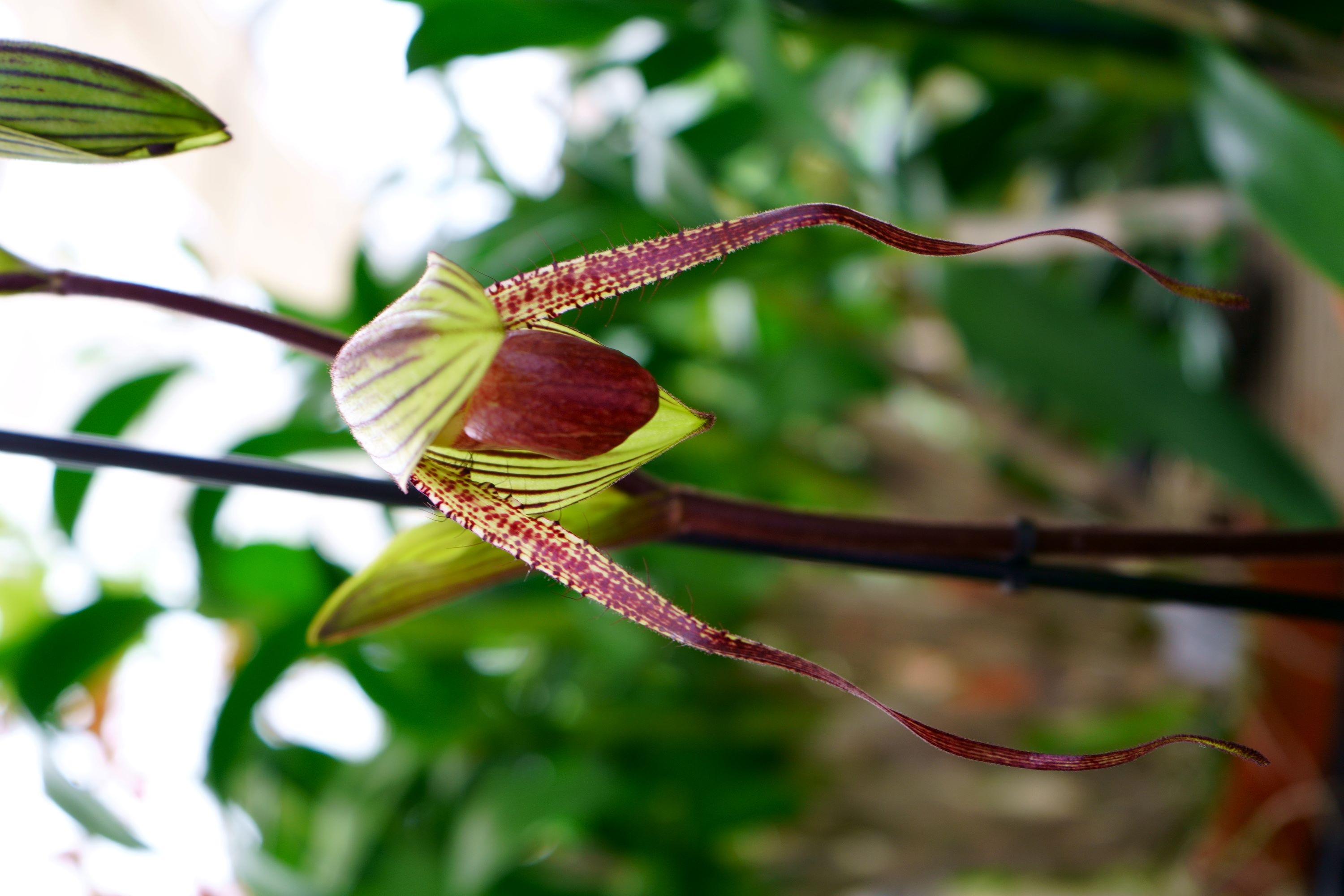
Paphiopedilum orchids, commonly known as Slipper Orchids, exhibit a distinct charm with their slipper-shaped flowers. These flowers can last an impressive four to twelve weeks, offering extended enjoyment.
Care Tips:
- Light: Moderate to bright indirect light is ideal. Avoid direct sun exposure.
- Fertilizer: Apply a balanced orchid fertilizer during active growth.
Dendrobium: A Symphony of Blooms
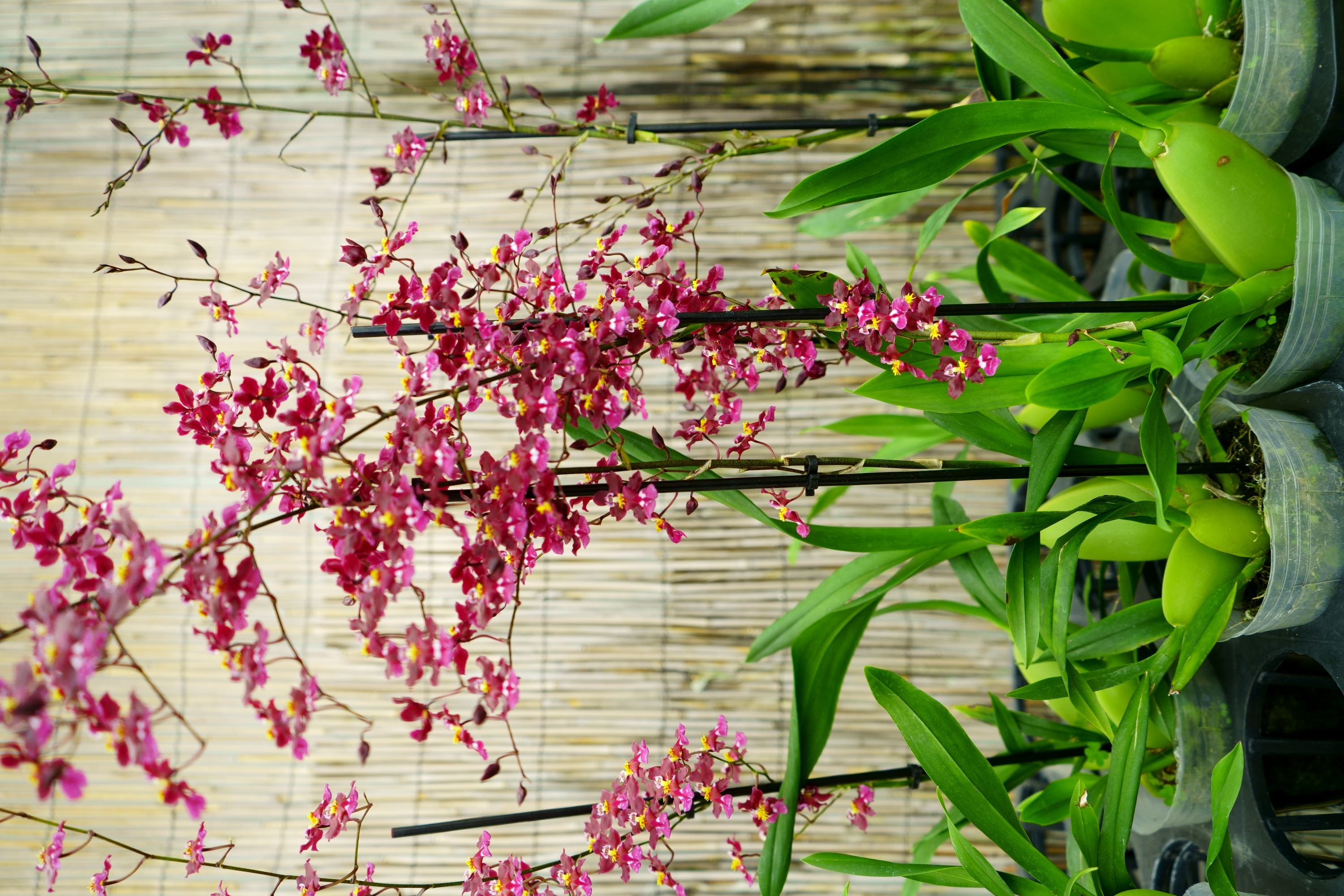
Dendrobium orchids present a captivating display of floral diversity, with varying blooming periods, ranging from a few weeks to several months, depending on the species. Their diverse colors and forms make them a versatile choice for orchid lovers.
Care Tips:
- Light: Bright indirect light is preferred, though requirements vary by species.
- Fertilizer: Use a balanced orchid fertilizer during growth phases.
Vanda orchids dazzle with their vivid colors and unique growth habits. While their blooms last only two to three weeks, their striking appearance makes a lasting impression.
Care Tips:
- Light: Very bright indirect light is essential. They can tolerate some early morning or late afternoon direct sunlight.
- Fertilizer: Regular feeding with a balanced orchid fertilizer supports healthy growth and blooming.
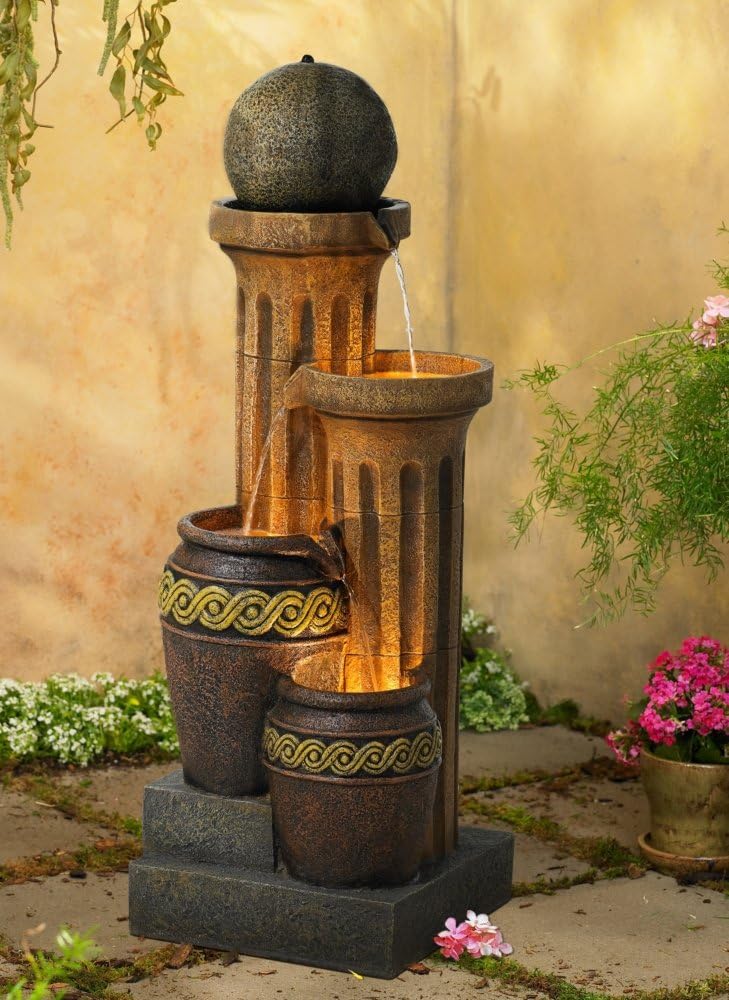
- Add rustic charm to your garden or patio with this 50-inch Sphere Jugs and Column Water Fountain.
- Features cascading water and built-in LED lighting for a soothing, magical ambiance.
- Perfect for decks, porches, or lawns, creating a stunning outdoor focal point.
- Durable design withstands the elements for long-lasting beauty with minimal maintenance.
- Elevate your outdoor space with this elegant, eye-catching water feature.
General Care Tips for Orchids:
While each orchid genus and species may have specific care requirements, to keep your orchids thriving and blooming, follow these general care guidelines:
Light Requirements:
Most orchids prefer bright indirect light. However, the specific light preferences can vary between orchid genera and species. For instance, Phalaenopsis can tolerate somewhat lower levels of light, while Vanda or Cattleya require very bright, but indirect light. Avoid direct hot sunlight, which can damage their leaves. If your space lacks natural light, consider using full spectrum grow lights to create the ideal environment.

VIVOSUN VS2000 LED Grow Light with Samsung LM301 Diodes & Brand Driver Dimmable Lights Sunlike Full Spectrum Panel Fixture
Fertilizer:
Regular fertilization during the active growth phase is crucial for orchids. Choose a balanced orchid fertilizer and follow the manufacturer's instructions to provide essential nutrients for healthy growth and prolonged blooming. The terms fertilizing and watering are often used synonymously. Most orchid fertilizer brands will suggest fertilizing on a monthly basis. We like to fertilize with a weaker solution of fertilizer on a weekly basis. If you decide to fertilize on a weekly basis, use one quarter of the suggested dose of fertilizer as is recommended for a monthly feeding.
Regular fertilization is crucial. Use a balanced orchid fertilizer during active growth and a high-phosphorus blend during blooming. For best results, we recommend dilute the fertilizer to one-quarter strength and apply weekly. For more tips on fertilizing orchids, explore our detailed guide here.
Watering:
Orchids thrive with well-draining potting media and consistent moisture. Water thoroughly when the top inch of the mix feels dry. For optimal results, use reverse osmosis water, rainwater or distilled water to prevent mineral buildup. I personally use the Apec Reverse Osmosis System for both my orchids and drinking water—it’s a game-changer!
Temperature and Humidity:
Orchids typically originate from tropical regions and prefer daytime temperatures between 70° and 90°F (20°-30°C) and moderate to high humidity. To increase humidity, place a bowl of water nearby or use a humidifier
Air Circulation:
Orchids are often known as air plants, and good air circulation is vital to prevent fungal issues. Ensure your orchids have adequate ventilation, especially in humid environments. For optimal airflow, consider using a small fan to keep the air moving around your plants.
How Long Do Orchids Last?
The answer to the question of how long do orchids last is that the world of orchids is a captivating symphony of beauty, with each genus and species offering a unique experience. From the enduring elegance of Phalaenopsis to the majestic but fleeting beauty of Cattleya and the vibrant but brief spectacles of Vanda, orchids never fail to mesmerize. By understanding their blooming periods, light and fertilizer requirements, and general care guidelines, you can embark on a rewarding journey of nurturing these botanical masterpieces. So, let the enchanting floral symphony of orchids flourish in your care, delighting you with their breathtaking blooms for years to come.

